The future of e-commerce hinges on personalization, and it’s not just a trend—it’s a necessity. While a visually appealing website and stellar products or services are crucial, capturing your target audience’s attention and converting them into customers requires a personalized touch.
Shopify, a prominent e-commerce giant, emphasizes that personalization is pivotal in boosting a store’s conversion rate. In fact, stores leveraging e-commerce personalization strategies on the Shopify platform witness a 10-15 percent increase in conversion rates.
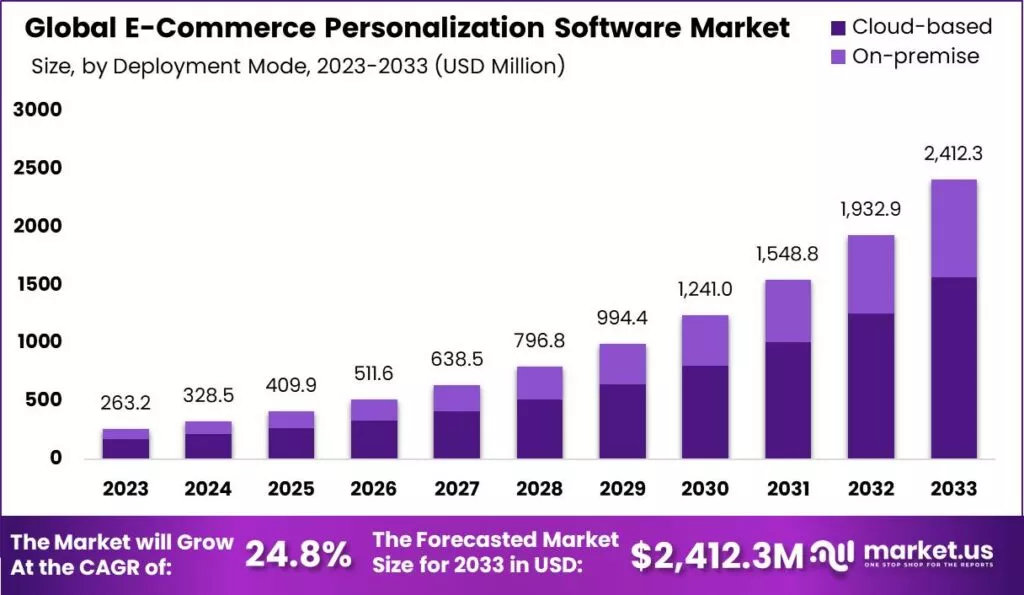
For businesses, this statistic underscores the significance of adopting e-commerce personalization strategies. Neglecting this approach means missing out on a potent tool in today’s fiercely competitive market. In this article, we will delve into five effective e-commerce personalization tactics to elevate the success of your online store.
Understanding E-commerce Personalization:
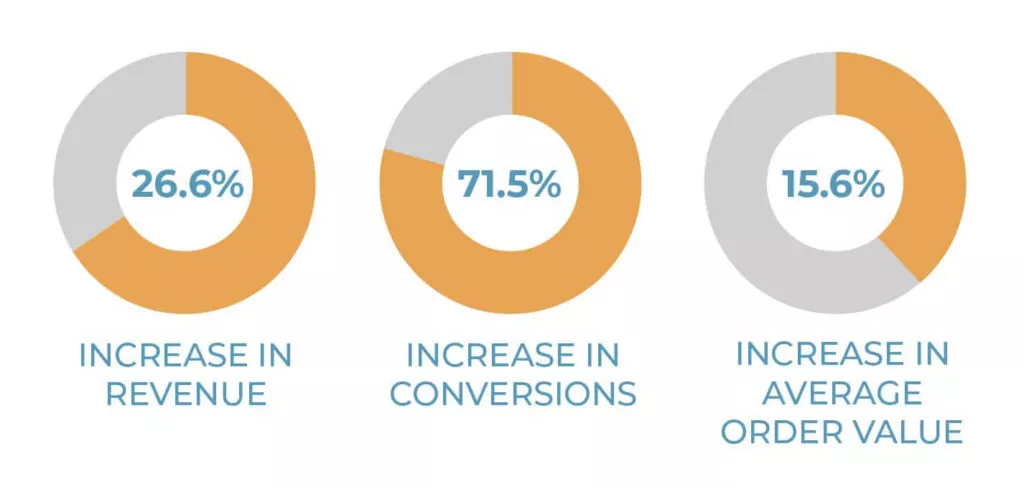
E-commerce personalization is a dynamic online sales and marketing technique that leverages user data to tailor the online shopping experience. The primary objective is to provide users with a personalized journey, ultimately boosting sales. Retailers achieve this by utilizing data such as the user’s location, browsing history, or past purchases to fine-tune product recommendations and deliver targeted promotions to each visitor.
By embracing e-commerce personalization, businesses can cater to individual customer needs, making it seamless for loyal patrons to discover and confidently add items to their digital shopping carts. Consequently, these personalization tactics foster customer loyalty and engagement. Targeted marketing campaigns further entice customers to return for more, creating a sustainable cycle of personalized shopping experiences.
The Advantages of E-commerce Personalization:

- Improved Customer Experience: Personalization transforms the online shopping journey into a tailored and enjoyable customer experience. Businesses can create a seamless and user-centric interface by catering to individual preferences.
- Higher Conversion Rates: A personalized approach significantly boosts conversion rates. By presenting tailored product recommendations and promotions based on user behavior, businesses increase the likelihood of turning visitors into satisfied customers.
- Enhanced Customer Loyalty: Personalization fosters a sense of connection and loyalty among customers. When individuals feel understood and catered to, they are more likely to return to a platform that consistently meets their preferences and needs.
- Optimized Marketing Strategies: Utilizing customer data for personalization allows businesses to refine and optimize their marketing strategies. Tailored promotions and targeted campaigns become more effective, leading to a higher return on investment.
- Increased Average Order Value: E-commerce personalization encourages customers to explore additional products or services that align with their preferences. This often results in higher average order values as personalized recommendations prompt customers to consider complementary items.
- Boosted Customer Engagement: Engaging customers through personalized content, recommendations, and promotions strengthens the connection between the brand and the audience. This heightened engagement contributes to a positive brand perception and customer satisfaction.
- Streamlined Shopping Process: Personalization simplifies the shopping process by presenting relevant options to users. This saves customers time and enhances their overall satisfaction with the online shopping experience.
- Data-Driven Decision-Making: E-commerce personalization relies on data analytics to understand customer behavior. This data-driven approach empowers businesses to make informed decisions, continually refining and improving their strategies.
Learn about B2B personalization here.
Strategies for Ecommerce Personalizations:
1. Enhance Sales Through Personalized Upselling and Cross-Selling
The adage holds: retaining customers is more cost-effective than acquiring new ones, and loyal customers often yield a higher lifetime value. Having successfully attracted visitors to your site, the next logical step is to maximize this opportunity through personalization.
Personalization opens avenues for authentic upselling and cross-selling. Leveraging customer data alongside intelligent ecommerce applications enables the seamless suggestion of similar or complementary products at strategic points in the customer journey.
Among the most popular recommendations are those on the Product Detail Page (PDP). These suggestions showcase comparable or complementary products, contributing to customer satisfaction and larger transaction sizes. However, personalization opportunities extend beyond specific product pages. It becomes even more effortless to make suggestions once a customer has chosen their products—adding items to their cart or completing a purchase. These pivotal moments in the buyer journey offer prime opportunities for personalized recommendations.
Examples of Effective Personalized Recommendations:

Amazon excels in providing tailored product suggestions from the moment you land on their homepage. Custom recommendations based on previously viewed or purchased products set the stage for a personalized shopping experience. It suggests similar and complementary items on each product page, offering choices aligned with the customer’s preferences and facilitating a streamlined purchasing process.
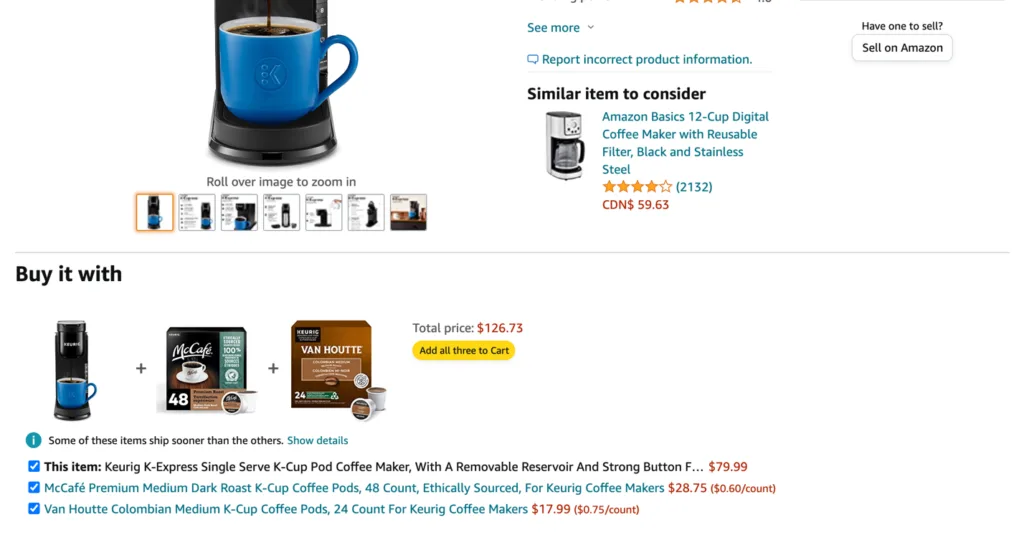
- Package Free Shop:
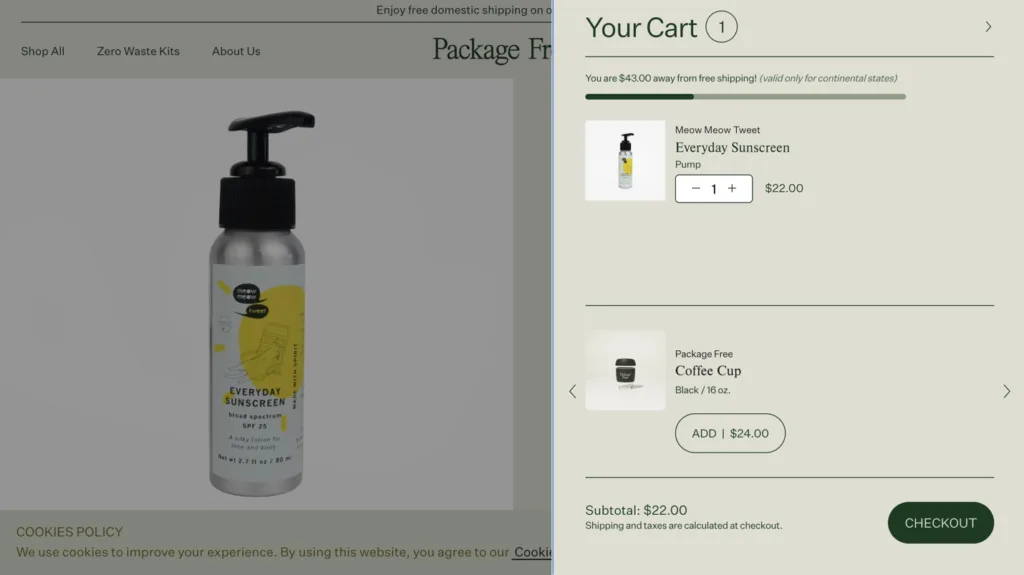
Smart ecommerce practices come into play at Package Free Shop, where personalization takes center stage after a customer adds an item to their cart. The shop suggests similar products based on the customer’s recent selection, displayed in an accessible carousel format. Users are informed about the additional amount needed to qualify for free shipping, adding an extra incentive layer to encourage purchases further.
2. Craft Personalized On-Site Offers
The initial hurdle in marketing often lies in attracting visitors to your website. Personalized offers present a strategic opportunity to capitalize on these visits, making site visitors feel valued and understood.
Consider implementing a model that extends a discount to first-time visitors, creating a dual benefit of immediate engagement and capturing a new lead for off-site marketing initiatives. This approach fosters a sense of exclusivity for the customer, akin to an invitation to join an exclusive club.
Leveraging browsing behavior opens avenues for designing personalized offers. A well-timed pop-up with a custom offer, triggered when a user attempts to leave the online store, can sway them towards a purchase, thereby reducing cart abandonment rates. Additionally, enhancing the user experience involves offering personalized product suggestions at checkout, increasing the likelihood of boosting the average order value.
Examples:
- Artisaire:
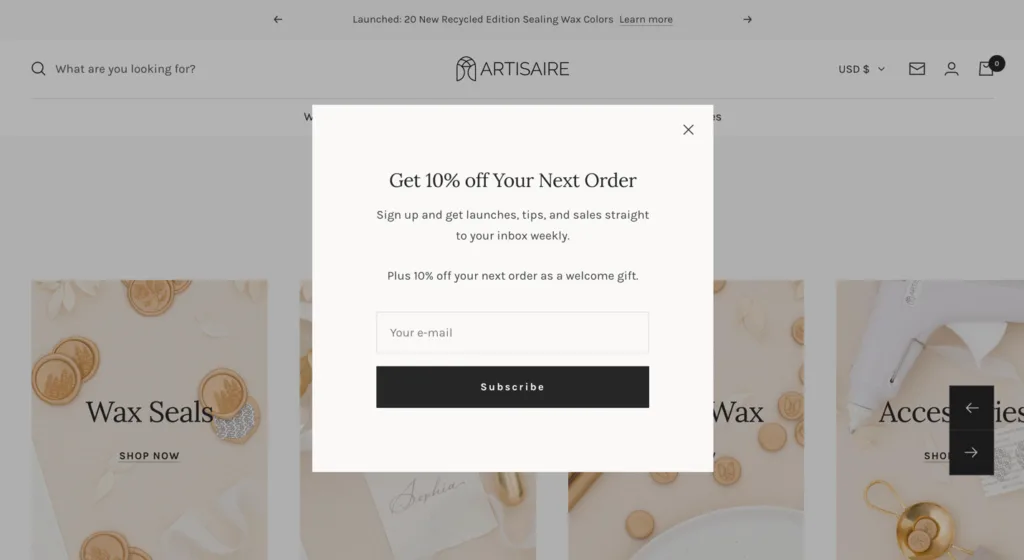
Artisaire, specializing in customized wax stamps and premade seals, strategically targets non-subscribers with a compelling 10% discount offer. This personalized approach aims to convert first-time visitors into engaged customers.
- Makeup for Melanin Girls (MFMG):
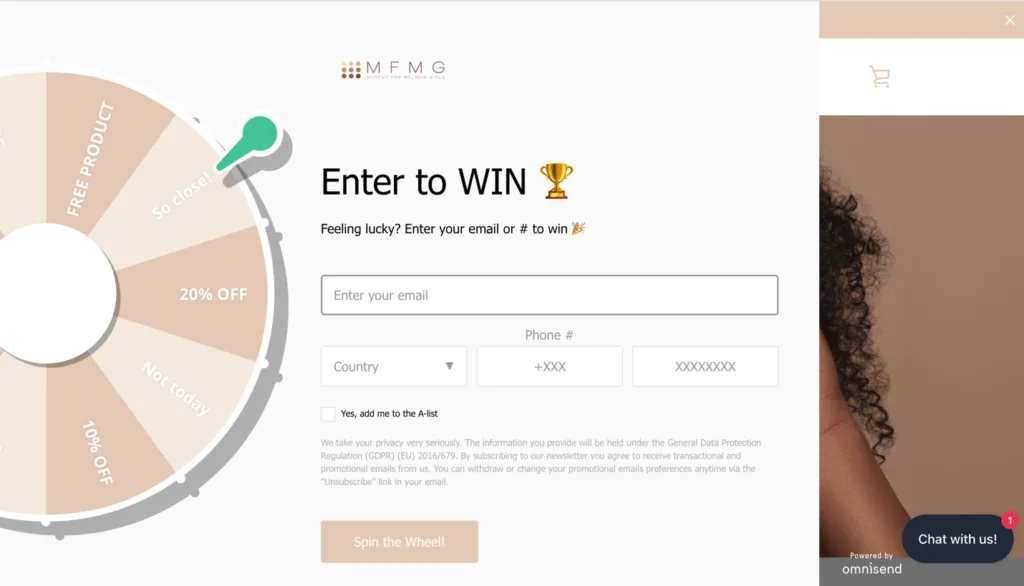
MFMG adopts a subtle yet engaging approach by offering customers a gift through a clickable icon leading to a wheel of special offers. This gamified presentation encourages users to enter their information, providing new and returning visitors personalized incentives.
- Meow Meow Tweet Tweet:
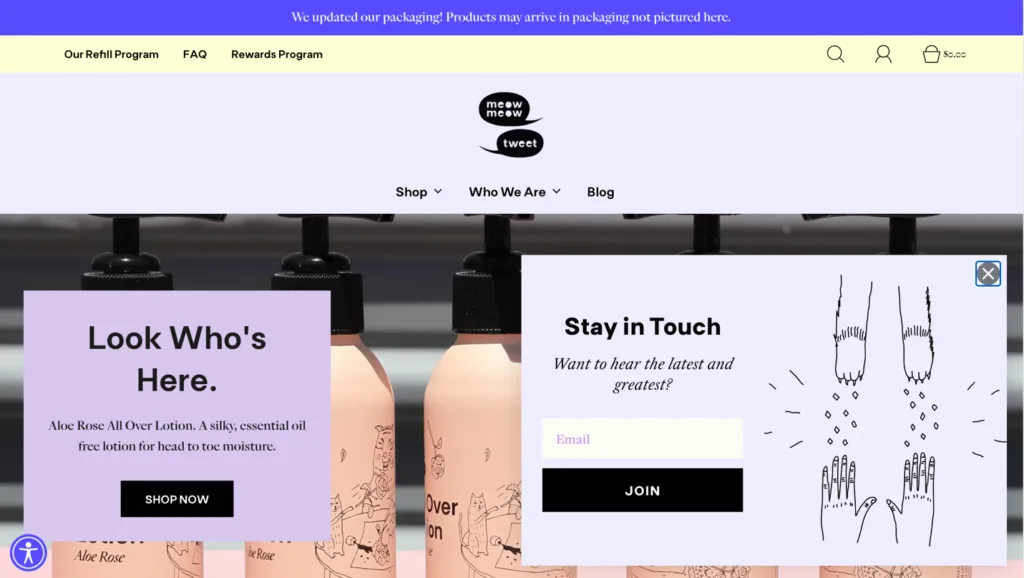
The eco-conscious company Meow Meow Tweet Tweet employs the promise of exclusive offers delivered to the inbox, targeting those who still need to subscribe to their newsletter. The pop-up invites them to join their club, fostering brand loyalty.
3. Tailor Your Email Communications
Personalization extends beyond your website and into your email marketing strategy. Once user data is captured, it becomes a powerful tool to enhance the personalized shopping experience. A fundamental example involves incorporating the customer’s first name into emails, a seemingly small touch that can significantly impact conversion rates.
In abandoned cart emails, elevating personalization involves addressing customers by name and including the items left behind. Should this approach prove unsuccessful, retargeting subscribers and customers later becomes essential, featuring personalized product suggestions based on their prior cart behavior.
Utilizing behavioral cues such as engagement provides further avenues for personalizing marketing strategies. Active subscribers on your website may prompt a targeted email with a special offer, while increased email engagement could trigger a personalized product suggestion.
Even basic information like user location can dictate the content of your emails. Tailor your offerings to align with the season and current weather conditions, ensuring relevance. For instance, selling summer clothing to an Australian market in July may not be the most effective approach.
4. Tailor Your Homepage Experience
Your homepage serves as the virtual storefront window, showcasing new products and relevant offers to your customers. Consider creating individual landing pages for distinct product lines for added personalization.
Leveraging location data is a straightforward method to customize your site for visitors. Align promotions and messaging with the time of year and local weather conditions. Demographic factors such as age, gender, or previous page visits can also guide the presentation of products to different user segments.
Take advantage of the opportunity to express appreciation to returning customers. Implement welcome-back messaging and homepage product suggestions aligned with their previous purchases.
Examples:
- Hiut Denim Co.:
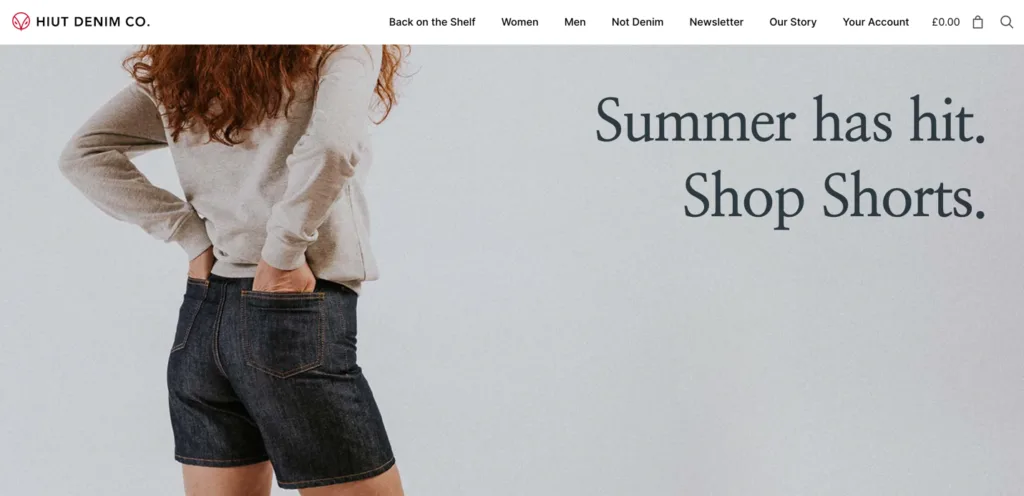
UK-based Hiut Denim Co. tailors its homepage based on user data, utilizing location and other demographics to suggest women’s shorts. This personalized approach enhances the relevance of the showcased products.
- Amazon
AmazoAmazon:

Amazon, a global giant, goes beyond personalized product suggestions by featuring the customer’s name on the homepage, even when signed out of their account. This added touch contributes to a sense of individualized interaction.
5. Curate Personalized Bestseller Lists or Collections
The examples demonstrate that suggesting products or services can be done before a customer selects. Leveraging information like site behavior and demographics enables automation to swiftly generate tailored suggestions for users, offering real-time, relevant content based on personal data.
A practical method involves creating personalized bestseller lists or custom collections of complementary products. Rather than recommending overall top-selling items, crafting a list of best-selling products tailored to specific demographics, such as men aged 20-35 in the U.S., can significantly boost engagement and conversion rates.
Example:
- Indigo:
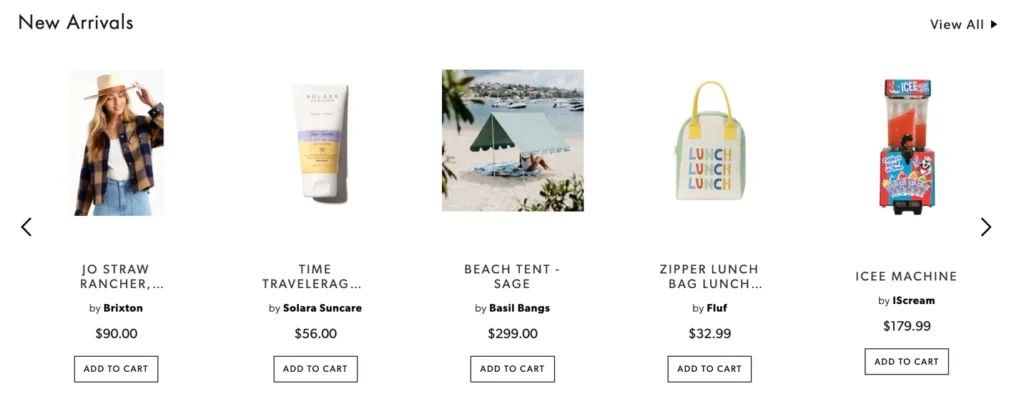
Canada’s major bookstore chain, Indigo, goes beyond books, using customer data to curate collections that align with visitors’ interests. The screenshot shows that the new arrivals collection is customized based on the individual visitor. In this example, the personalized carousel simplifies the discovery of items aligned with the user’s preferences, enhancing the likelihood of a purchase.
Conclusion:
As ecommerce platforms evolve with advancements, ecommerce personalization becomes increasingly accessible, relying on machine learning technology and incorporating omnichannel touchpoints across social media and beyond. The outlined strategies provide practical ways to prioritize essential aspects of your ecommerce business, fostering connections with your customer base and effectively communicating the value of your ecommerce store.
FAQs on Ecommerce Personalization::
Why is personalization important in ecommerce?
Personalization in ecommerce enhances the customer experience by tailoring content and suggestions based on individual preferences, increasing engagement and conversion rates.
How does automation contribute to personalized recommendations?
Automation utilizes user data, including site behavior and demographics, to generate real-time custom suggestions, providing relevant content to users.
What is the significance of creating personalized bestseller lists?
Crafting personalized bestseller lists or collections tailored to specific demographics boosts engagement and conversion rates by offering highly relevant product recommendations.
How can ecommerce platforms leverage machine learning for personalization?
Ecommerce platforms can utilize machine learning technology to analyze user behavior, predict preferences, and deliver personalized experiences across various channels.



